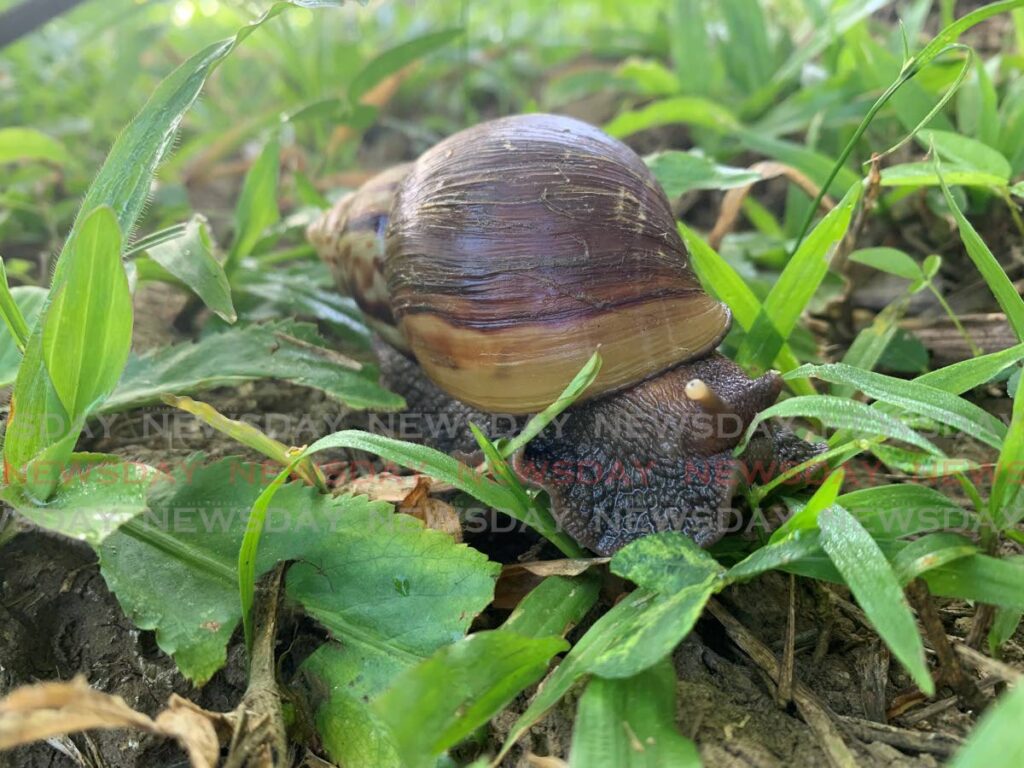120,000 giant African snails collected during eradication drive

MEMBERS of the public collected some 120,000 giant African snails for bounty/reward during a three-week pilot project run in counties Caroni and St George West, learnt the Joint Select Committee (JSC) on Land and Physical Infrastructure at a sitting at Cabildo Chambers, Port of Spain on January 22.
Teresa Rosemond, the Ministry of Agriculture’s director of extension training, said some 5,000 kilogrammes of the pest were collected in the “short period” of January 16-February 7, 2023.
“We kept down some of the snails.” She said $27,000 was paid out in sum as bounty to some 52 people bringing in the snails to the ministry for disposal.
Rosemond deemed this pilot project to be a success as it helping to identify any “gaps” before any national roll-out of the project.
She said the project showed that the removal of snails was the most effective ways of dealing with them.
Regarding an outbreak of snails who were reproducing, Rosemond said, “You don’t need two snails. The snail is a hermaphrodite. You need one snail.”
Rosemond urged communities to come together to collect and eradicate snails. She urged home-owners not to encourage snails on their premises, saying they gravitate towards items like lumber left lying on the ground, or heaps of cut grass left to languish.
“Do your general maintenance,” she urged. “You have to be vigilant and take ownership of the problem.”
Rosemond said that merely laying poisonous snail-bait on the ground did not help eradicate the snail incursion.
“When you throw the poison and they are close to death, they release their eggs.”
She lamented that her ministry did not have a lot of field staff. Ministry of Local Government permanent secretary Peter Mitchell said municipal corporations nationwide could act as the ministry’s eyes and do some first responding at their local level.
Rosemond said the Agriculture Ministry’s ambitions to eradicate the snail had suffered a big setback in 2012 after a very major flood in Diego Martin.
She said the rich silt that was brought down in the flood attracted people into the area who took truckloads of the silt to other parts of TT, and so spread the snail.
“The snail was a hitch-hiker,” she said.
Regarding the snail plus locust infestations, the agriculture ministry’s Rishi Mohansingh, an agriculture entomologist, said these pests cannot be eradicated but merely managed.
He said birds do consume locusts but there are not enough birds to handle the number of locusts present. He said last year the ministry introduced a biological agent against locusts in the form of a fungus with which to infect the insects’ egg-beds that lay deep in forests.
Mohansingh said birds and rodents consume the snail, but there are not enough of these predators to eradicate all snails.
Local Government Ministry public health inspector Simone Moses attached to the San Juan/Laventille Regional Corporation expressed her worry at the ongoing spread of snails.
“It is alarming. It will soon have an impact on the ecosystem, especially the north coast.
“In the last weeks we have noticed an increase in the population there.”

Comments
"120,000 giant African snails collected during eradication drive"